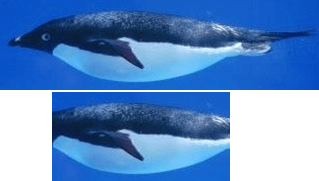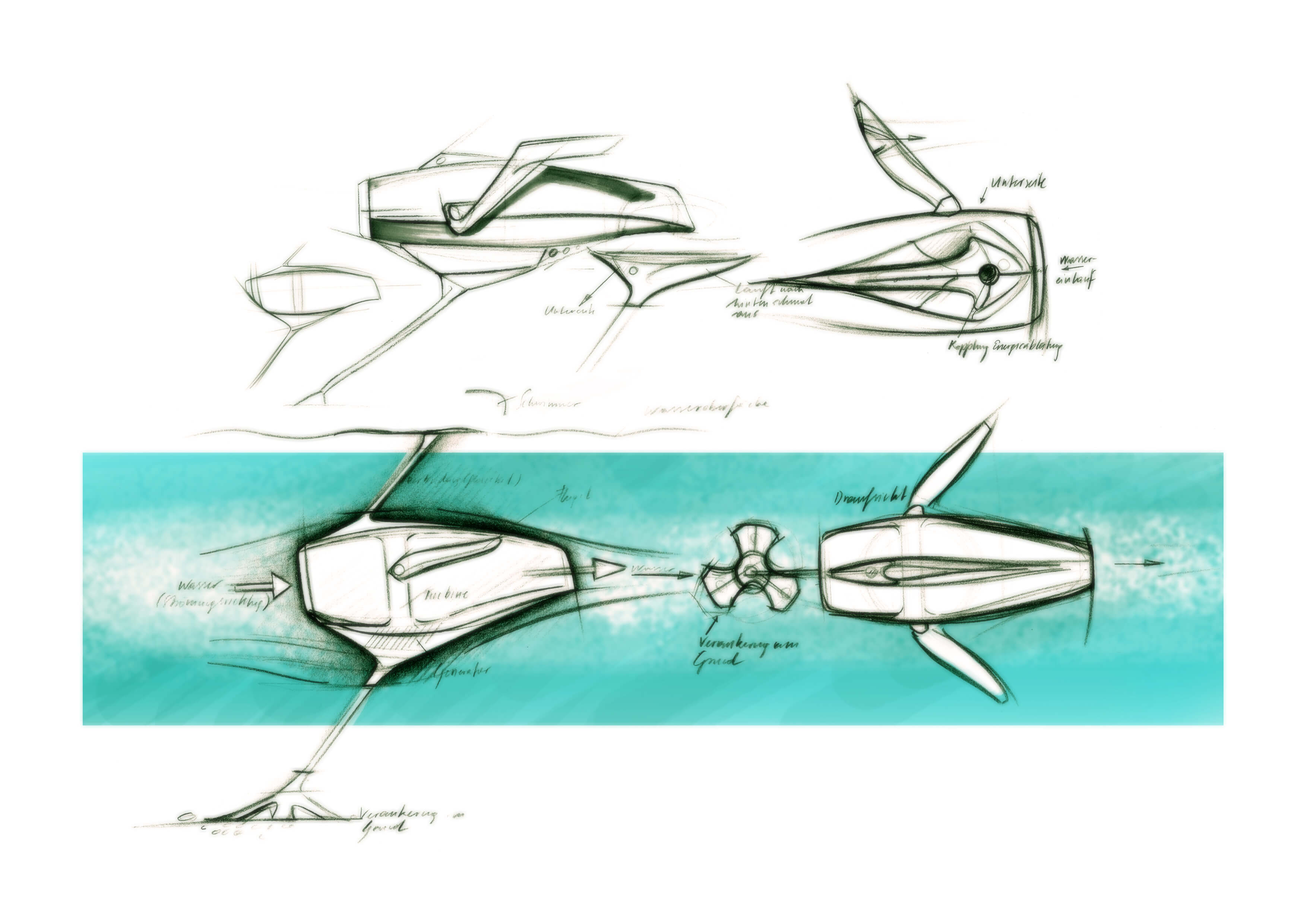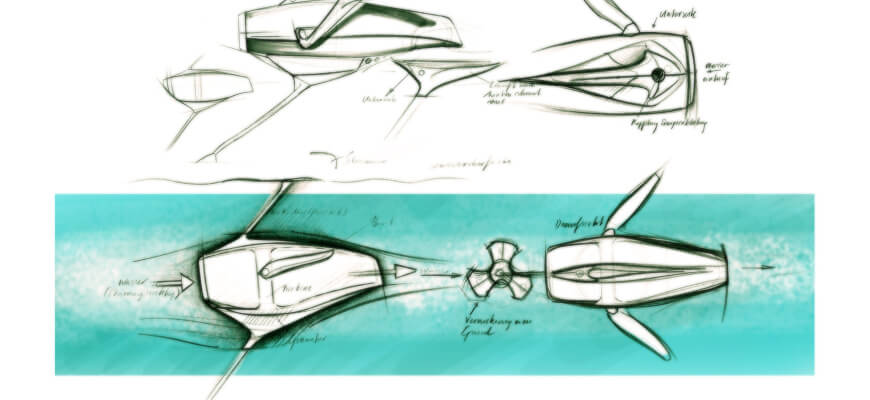Today I’d like to introduce my first Biomimetic project to you. It is about a floating turbine, which could be used to generate electrical energy while swimming in a river or other streams. I’ll follow my own pathway that I used several years ago, with the exception that some sources are now available for everyone. The series of articles will consist of three parts:
Part I: The Flight of Albatross – Paper Overview
Part II: Aerodynamics of Penguins
Part III: Concept and Design
I hope you will enjoy this small trip over the weeks and get something out of it. Maybe you’ll find something in addition to improve the concept or you get another idea. If this is the case, feel free to share your ideas or get in contact with us/me.
And now here we go: Part III
Over the last 2 months I presented you the flight of the albatross and the hydrodynamics of penguins. This time I will assemble those ideas and add a last small input to reconstruct the full concept of a floating turbine.
Swim bladder
The swim bladder (or air bladder) – an organ of many fish species – will be the last obvious natural inspiration, used in my concept. The most of you might already know about it, but here is a small description.
The organ has two regulative tasks. It is responsible for adapting the specific weight (density) of a fish and its positional stabilization. The bladder itself is filled with gas. There are different mechanism of filling, but that is another story. Positional stabilization is done by the location of the bladder inside the body, so it is usually located above the center of mass. [1]
The fact that a fish can manipulate its own specific weight, makes it possible to float inside the water, without using additional energy. Sharks for example need to swim the whole time to generate enough uplift or they are lying on the seabed, because they are not in possession of a swim bladder.
Floating Turbine – Concept
Here we are with 3 completly different mechanics from nature:
- energy conversion: conversion of kinetic energy into potential energy and vice versa (flight of albatross)
- friction reduction: very low Cw-values of spindle formed bodies (aerodynamic/hydrodynamic of penguins)
- levitation: manipulation of specific weight (swim bladder of fishes)
I imagine that you, as reader of our articles, already have in mind what comes next and how the ‘final product’ could look like (also without knowing the big picture in the beginning). In general I would say: „Now, it is just a puzzle.“
The body of the floating turbine is reassembling the basic shape of a penguin. Of course, it does not have a small peak, like the beak of a penguin. This causes two large openings in the front and the back of the turbine, where the water stream will get through and actuate a generator.

Original picture by Ingo Rechenberg
The wings of albatrosses could be used on both flanks of the turbine to regulate its position inside the flow. This adaption could lead to an optimized usage of a changing velocity gradient inside the water. Maybe it is effective to regulate the position in the water stream, like the albatross does in the wind. For this effect a connection – adjustable in length and fixed to a point on the ground – could be used.

original picture by Sachs [2]
The swim bladder principle could be used for the floating turbine in a more biomimicry way (it is more like a copy). The whole turbine itself could be a huge bladder filled with air or another gas. In my opinion an active regulation of the amount of gas is not necessary at this point in developing the concept. As a starting setup, the turbine gets filled with a gas and fixed to ground. If needed, a little bit of air could be released via a valve to reach a point where the turbine is more or less floating. At this point should be mentioned, that the actual weight of the turbine is yet unknown. The only thing that I can assume is that the construction should be as light as possible. This could also be very useful in terms of mitigation. Mitigation here means the direct reaction of the turbine body to its environment. If we have a light weighted body working like a balloon, it could very likely avoid floating branches or other object which could cause damage.
Floating Turbine – Design
So finally here the illustration of the concept.

Floating Turbine: Illustration by Patrizia Stromberger; Concept by Jan Berger
As you can read, it is not a finished concept. No generator type is mentioned. What are the exact dimensions? Where exactly can you use it? How efficient is it? These questions won’t be answered and it is up to you to do something with all the information you gathered.
I really hope you could draw some inspiration out of this article series and maybe you will generate much more detailed ideas for a turbine like this or any other project.
This is the first article in 2016, I wish you all a happy new year!
sincerely,
Jan Berger
References:
[1] Relationship between Swim Bladder Morphology and Hearing Abilities – A Case Study on Asian and African Cichlids – Tanja Schulz-Mirbach et.al.
[2] Minimum shear wind strength required for dynamic soaring of albatrosses – Gottfried Sachs
[3] Illustration of the floating turbine – Patrizia Stromberger




